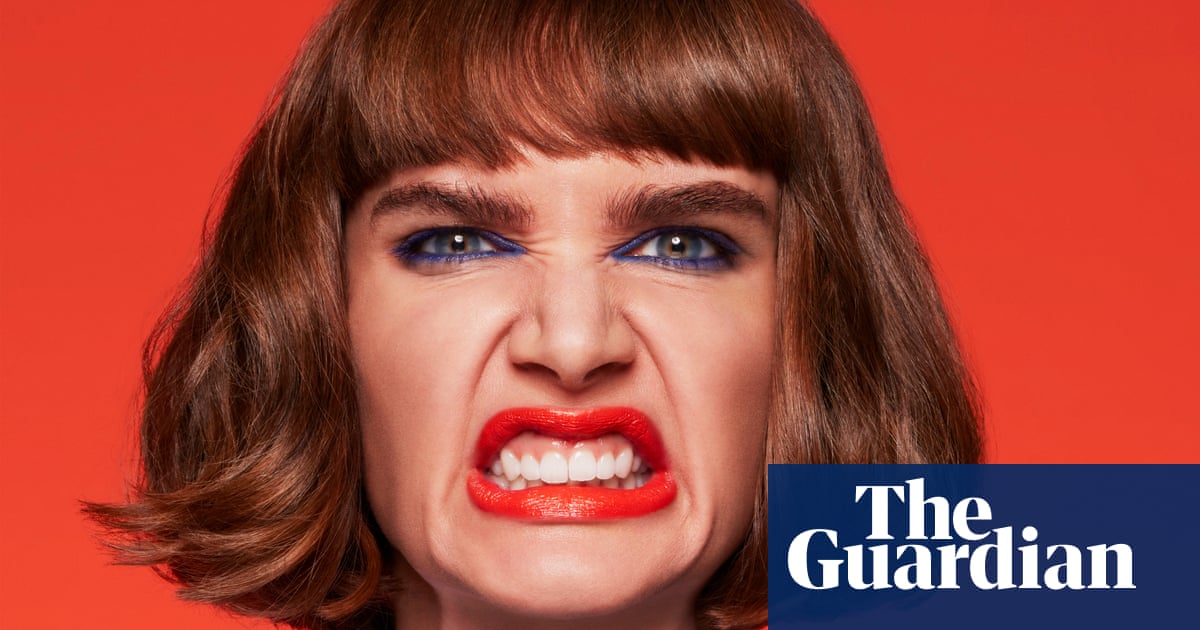
Draped over an armchair lies a woman in a puffy yellow frock. Head hanging and face shielded by forlorn, folded arms, she is a pastel portrait of misery. After all, she is on the Australian cover of Meg Mason’s 2020 novel Sorrow and Bliss.
Mason’s book was a huge hit around the world. Now, a catalogue of well-dressed and apparently distressed, faceless women are appearing on covers. Among them is Genevieve Novak’s debut No Hard Feelings, to be published in Australia in March this year. The cover features a woman flopped atop a bed, legs bent and arms sprawled to hide her face. The title is large, and followed by a teaser: “Hungover, underpaid and overwhelmed.”
Similarly, Kimberley Allsopp’s upcoming release, Love and Other Puzzles, with its synopsis “life doesn’t always go according to plan”, has a woman in a bright yellow coat, leaning head-down and fed-up against a pink wall. She Is Haunted by Paige Clark, a debut short story collection published last year, features the same bold title font and a woman staring out a window. And then there’s Careering by Daisy Buchanan, which is out in March this year. Among greens and watermelon reds, and another sad synopsis (“On the right track … or coming off the rails?”), a woman in pink skirts lies face-down on a couch.
While an obvious trend is emerging, the primary inspiration for a design for any book cover “is always the text itself”, says Mietta Yans, vice-president of the Australian Book Designers Association, and designer of Novak’s cover.
“And all of these books coming through are about distressed women in their 20s, reflecting on the chaos of life at that point. Maybe it is a result of the pandemic, but I fully relate to these books,” she laughs. “I feel it makes it easier for me to design them.”
“You know it is a trend,” Mark Campbell, head of HarperCollins’ design department, says. “Especially when separate designers from separate publishing houses are coming to the same place by themselves.”
‘Illustrated covers had their moment’
Campbell says “a saturation of illustrated covers” followed the publication of Sally Rooney’s Normal People back in 2018. The novel featured a large bold title and minimalistic line art of lovers embracing in a tin, against a muted olive backdrop. Campbell calls it a “sad, lonely illustration style. A person frustrated with the world. It hit a nerve.”
With Normal People becoming a huge hit and landing plenty of awards, “publishers wanted to follow its success – designers go, ‘this book is similar, so let’s make it look similar too’,” he says.
James Ross, operations manager at Gleebooks, says he has been seeing “variations on Sally Rooney covers” coming through his bookshop – like Diana Reed’s Love and Virtue, Holly Wainwright’s I Give My Marriage a Year, and the international cover of Mason’s Sorrow and Bliss. They tend to appeal to “anyone who is a fan of the greats, like your Didions” as well as “a younger audience with geometric shapes and colours”.
“Bold colour pallets, type-led, graphic and visual” are all design choices made to “romanticise the ideas and experiences in the book”, says Yans. Choosing a faceless woman over a portrait “adds an anonymity that lets the reader imagine the story as their own”.
But “at the back of every trend, there is something emerging that is the opposite, or pushes it further,” she says. “As a designer, you are looking for something that will reach the same mass audience … but in a different way, setting the story apart.”
“Illustrated covers had their moment,” says Campbell. Post-Rooney, cover designers are opting for photographs instead to invoke “a similar feeling and message of that loneliness or frustration”. He recalls the 2020 novel Kokomo by Victoria Hannan as one of the first to branch out from the “illustrated uncomfortable person to the photographic version of the same thing”.
Sign up for the fun stuff with our rundown of must-reads, pop culture and tips for the weekend, every Saturday morning
The early seeds of this trend, he thinks, came with the 2018 reissue of Rachel Cusk’s Outline books. There are no distressed women in sight – just arty, Polaroid-style images, framed by a thick white border and grounded by bold type. But put them next to titles like Sorrow and Bliss and No Hard Feelings, and “you start to see trends blend together”, he says.
“You would see literary covers with arty images, and then commercial covers with big text and illustrated characters. Every publisher wants their book to fall in the sweet spot, and the photographic covers feel halfway in between this,” he says.
In his bookshop, Ross has noticed that covers trends “tend to shift with one groundbreaking, or an indefinable book”.
“It takes a book that is not similar to the stuff that you have been seeing before,” he observes. “A challenging, intriguing text usually has a cover that is also challenging, intriguing and fresh.”
And just like any trend, all these sad young women will disappear from covers soon. “Eventually, too many things look the same,” Campbell says. “Then a writer will come along and demand a cover that is different. They make us ask, how do we reinvent the wheel? How can we move the dial forward? How do we find the sweet spot in that genre without trying to look the same?”
But it may not be this year, and we may see even more before the trend disappears entirely, says Yans, who anticipates seeing more of the same “type, colour and design-led things” in 2022.
“It is what the audience wants to see,” she says. “And the more it works in commercial, the more publishers start to trust designers.”












